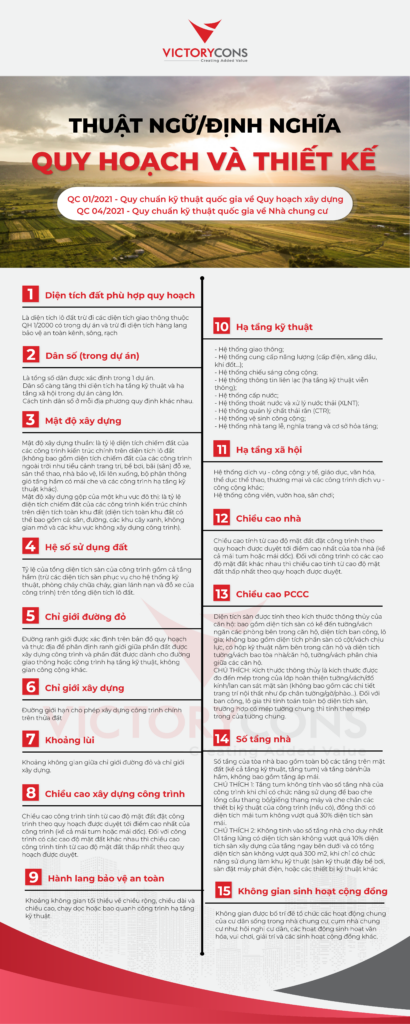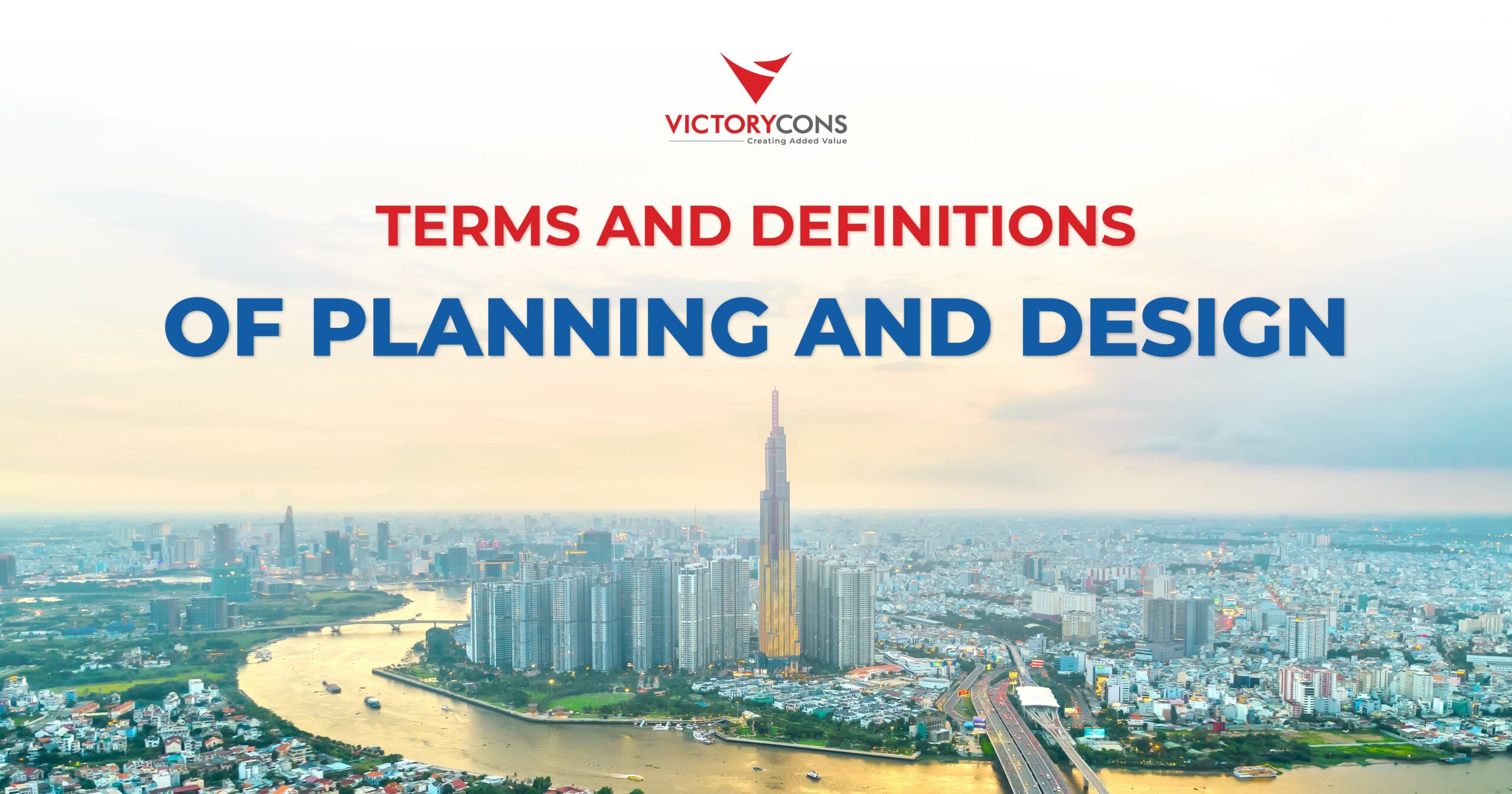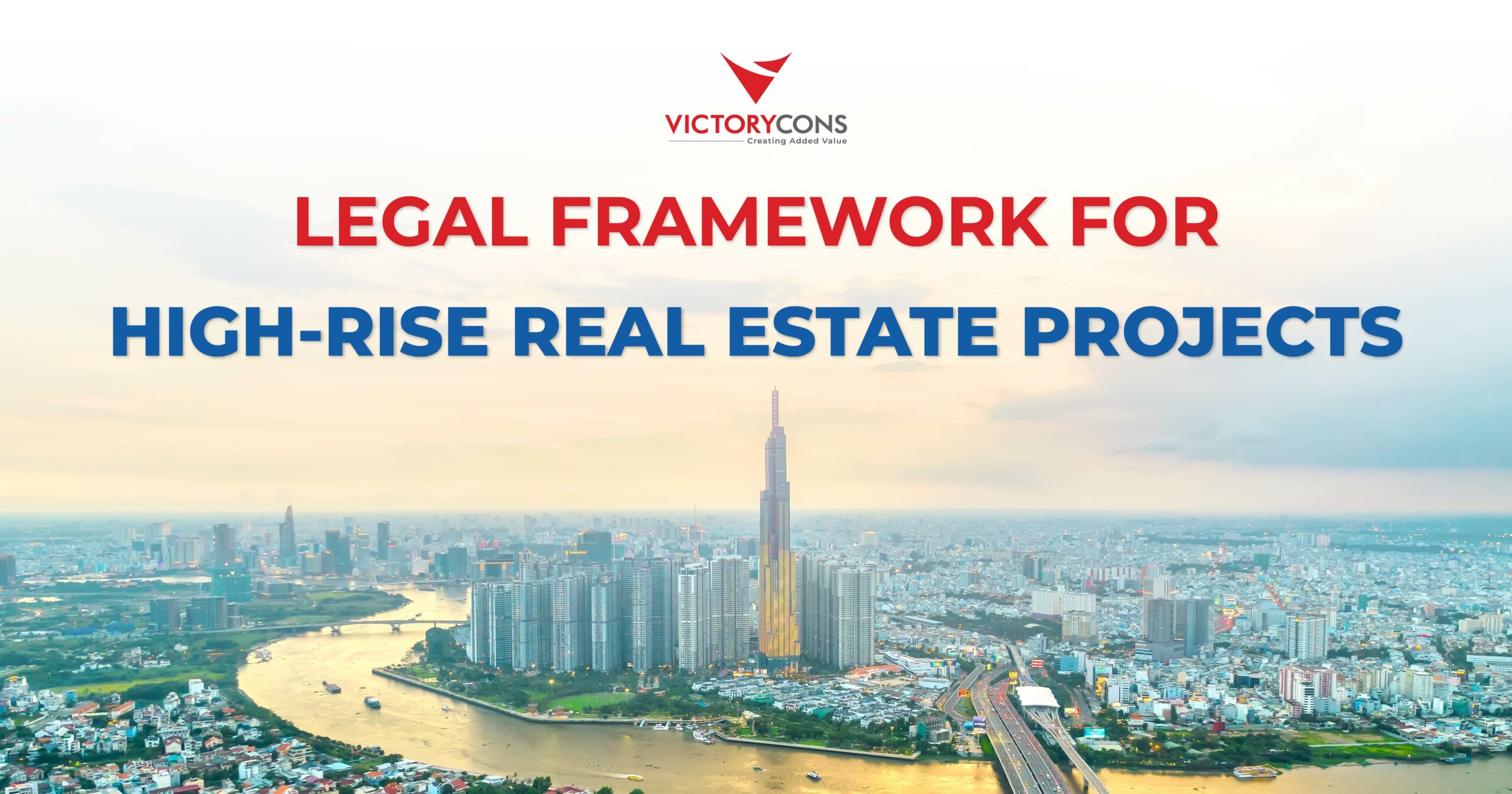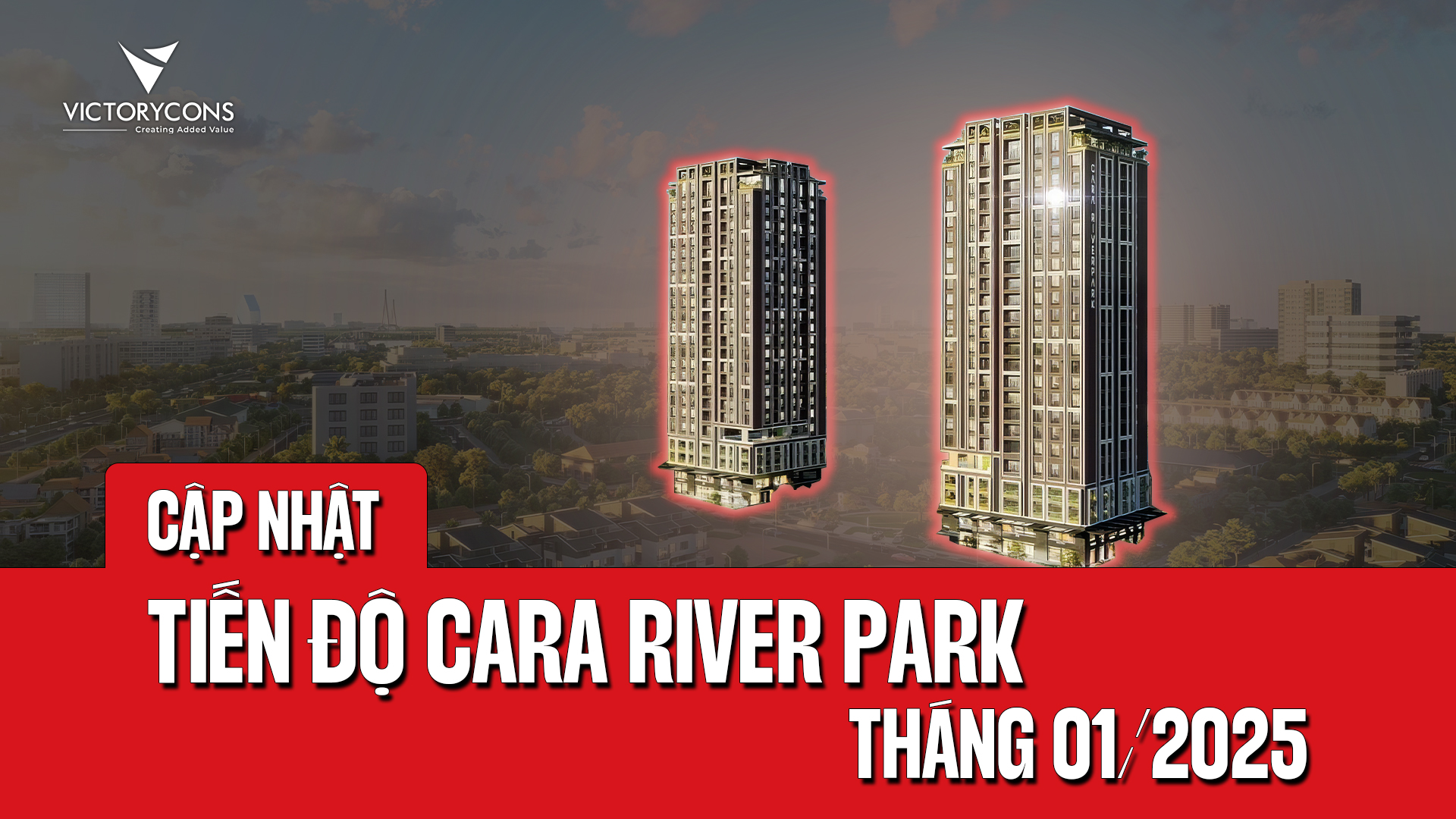Urban planning and building design play a fundamental role in organizing urban spaces and directing sustainable development. This article compiles key terms to systematize knowledge and establish a solid professional foundation, supporting the planning, design, and effective implementation of construction projects.
>>>> Read more: Leading Planning Consultancy Companies in Vietnam
1. Legal Basis for Planning and Design Terminology
VictoryCons follows the current national technical regulations. Two important legal documents forming the foundation for construction projects include:
- QC 01/2021 – National Technical Regulation on Urban Planning
- QC 04/2021 – National Technical Regulation on Apartment Buildings

2. Key Terms/Definitions Related to Planning and Design
2.1. Land Area Compliant with Planning
The land area minus traffic areas belonging to the 1/2000 Master Plan within the project and excluding safety corridor areas for roads, canals, rivers, and streams.
2.2. Population (within the project)
The total number of residents defined within a project.
- The larger the population, the greater the infrastructure and social facility requirements.
- The method for calculating population varies by locality.
2.3. Building Density
Net Building Density: The ratio of the ground coverage area of main architectural structures to the total land area (excluding areas occupied by outdoor structures such as decorative landscaping, swimming pools, parking lots, sports courts, security guard houses, access ramps, ventilation shafts, and other technical infrastructure).
Gross Building Density in an Urban Area: The ratio of the ground coverage area of main architectural structures to the total land area (including open spaces such as roads, green spaces, and non-buildable areas).
2.4. Floor Area Ratio (FAR)

2.5. Red Line Boundary
2.6. Building Line
2.7. Setback Distance
2.8. Building Height
2.9. Safety Corridor
2.10. Technical and Social Infrastructure
2.11. Social Infrastructure
Public Service Facilities: Healthcare, education, culture, sports, commerce, and other public services.
Green Spaces: Parks, gardens, and playgrounds.
2.12. Building Height
2.13. Fire Safety Height
The fire safety height (PCCC height) of a building is determined by the distance from the lowest road level accessible to fire trucks to the bottom edge of the window or opening on the exterior wall of the topmost floor, excluding the technical top floor.
- If no window or opening exists, the fire safety height is measured as half the total distance from the road level to the top floor’s slab and ceiling.
- If the rooftop is utilized, the fire safety height is measured from the road level to the top edge of the rooftop parapet.

2.14. Usable Apartment Area
The usable floor area is calculated based on the net internal dimensions, including:
- Floor space covering all partitions inside the apartment, balcony, and loggia.
- Excludes structural columns, technical shafts, and external walls.
NOTE: Net internal dimensions are measured to the inner edge of finished walls, partitions, glass frames, and railings at floor level. Balconies and loggias are fully included, and for shared walls, the measurement is taken to the inner edge of the shared wall.
2.15. Number of Building Floors
The total number of floors includes all above-ground levels, including technical floors, penthouses, and semi-basements, but excludes the attic.
NOTES:
- Penthouse floors are not counted if they only serve as enclosures for stairwells, elevator shafts, or technical equipment, and if the total penthouse area does not exceed 30% of the rooftop floor area.
- Mezzanine floors are not counted if their floor area does not exceed 10% of the immediately lower floor, the total does not exceed 300m², and they serve only technical functions (e.g., basement pool structures, generator rooms, or other technical spaces).
2.16. Community Living Space
A dedicated area within an apartment building or residential complex for resident meetings, cultural activities, entertainment, and shared community events.

Urban planning and architectural design involve complex professional terminology. However, understanding these definitions provides clarity on how urban spaces and buildings are planned, designed, and developed.
VictoryCons is committed to professional project development, aligning with legal standards, and assisting investors and partners throughout all project phases—from planning and design to construction and operation—ensuring cost efficiency and maximizing investment returns.

New strategy, new team – VictoryCons lays the foundation for success in 2025
The Most Comprehensive Legal Framework for High-Rise Real Estate Projects
Construction Progress of Cara River Park – January 2025
The Stages That Maximize Value and Profit for a Project






